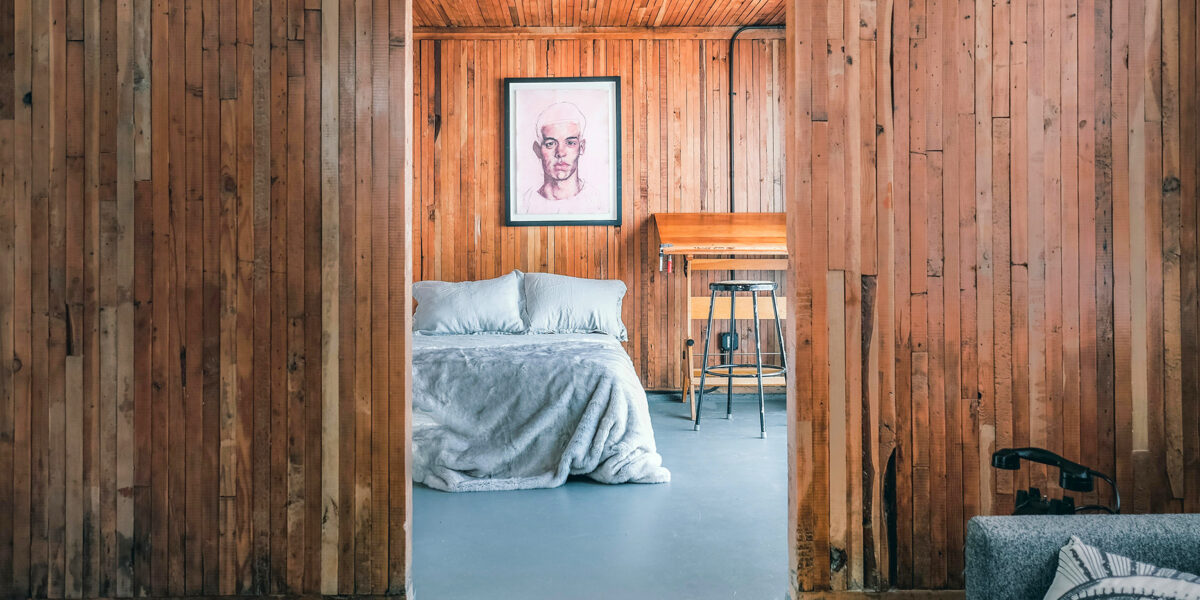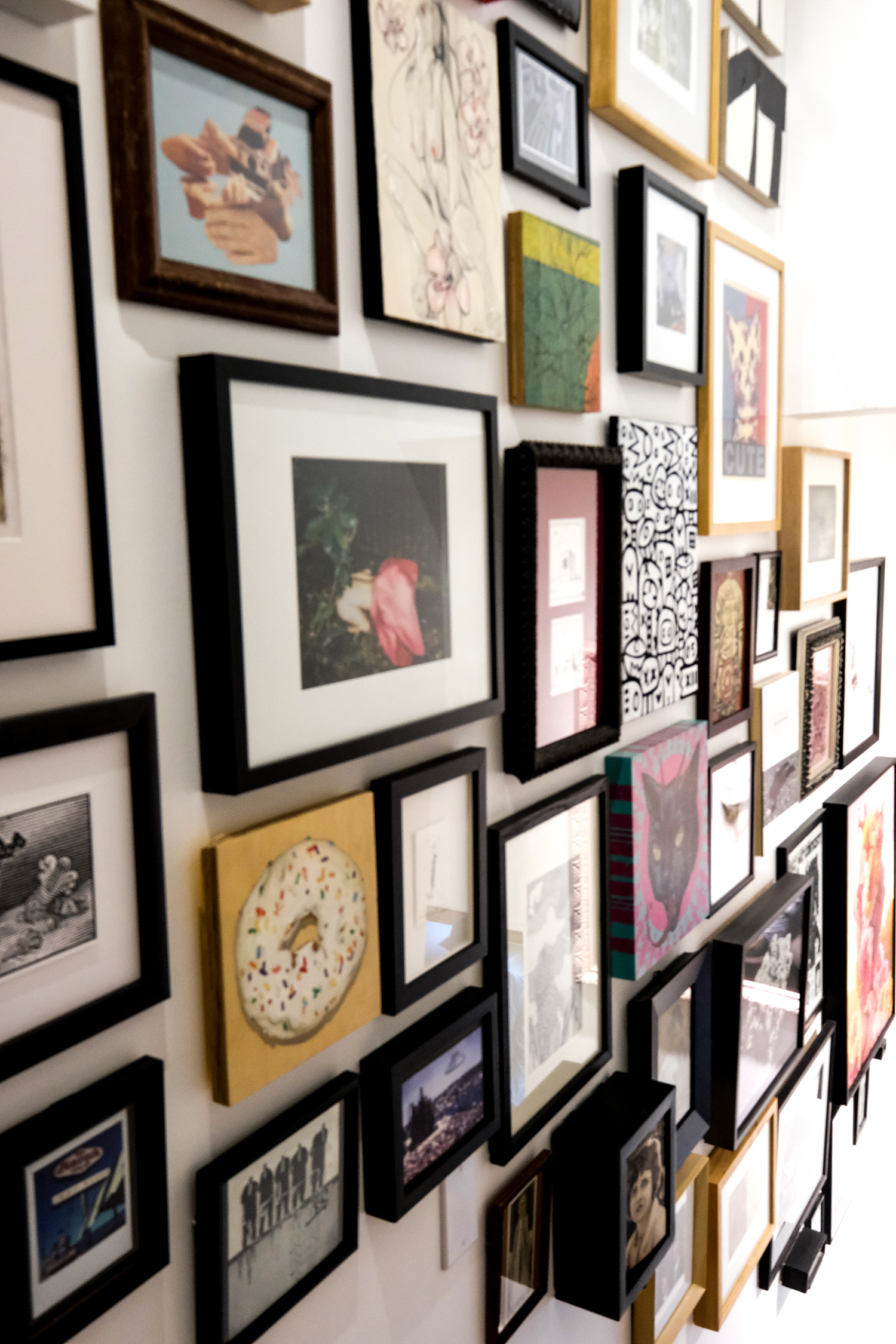
This Modern and Artsy Seattle Home Used to Be a Grocery Store
It’s now part-residence, part-creative space.

Mutuus Studio
When it comes to commercial spaces turned into residential spaces, you might not think twice about a factory turned into a loft, or maybe a schoolhouse into a home, but have you heard of a grocery store being converted into a residence? That’s what happened to this building in the North Beacon Hill neighborhood of Seattle.
The 3,800-square-foot building has had a lot of lives. It was originally built in 1929 and served as a general store for a couple of decades, owned and operated by Yugoslavian immigrants Sam and Mary Ulovich (who also lived in the space). After that, it became 3001 Grocery and later Tony’s Grocery. The last time it was a grocery was in 1997, when it was an Asian grocery store. It was then sold to a real estate lawyer who rented it from 1999 through 2010 to Bible Studies Outreach Ministries, a Baptist organization. After zoning laws were enforced in 2010, the Baptist church was forced to leave and the upper floor was rented out as a residence.

Mutuus Studio
Then came artists Demi Raven and Janet Galore, who bought the building in 2015. “When we bought the property, it was in poor condition, and still had much of the grocery equipment from 1997 which had not been maintained, including two walk-in coolers within the space and a large walk-in freezer on the upper patio level,” says Demi. “Aside from the original cut glass windows on the upper floor, all the windows had been replaced with plexiglass, the doors had signs of being broken into multiple times, there was an abundance of mold, and signs of a former wall-heater fire. The brickwork had not been maintained since likely its initial creation and the exterior walls were in dire need of attention.”

Mutuus Studio
But Demi and Janet weren’t deterred by the neglected space. They recognized its value historically to the neighborhood and saw potential in its continued use—especially the large front room which could be used for so many creative purposes. So they reached out to the team at Mutuus Studio to help them renovate and turn it into The Grocery Studios, which is what it’s called today.
“We saw the space as a residence, ultimately, but not in the typical sense,” Janet says. “Given the flexibility and semi-public qualities of the building, we intended to use the space not just as a home, but also a studio for our work, and as a not-for-profit event location to engage with community.”

Mutuus Studio
Creating a space that’s both a home and public venue can have its challenges. While the team had to deal with building codes that have different requirements for residential and commercial uses, they also had to make it feel both private and accessible to the public. “The key is to keep spaces adaptable with limited permanent specialized configurations,” says Jim Friesz, one of the principals at Mutuus Studio. “This allows areas to transform from private to public, often with quick furniture re-arrangements that allow the transformation when the artist community energy comes inside.” Providing plenty of behind-the-scenes storage was key to making the public-to-private (and vice-versa) conversions easier.

Mutuus Studio
At the start of the project, the home and commercial spaces were very separate, and the goal was to have them feel more connected. “The second-floor apartment and street-level studio had independent exterior entries with no interior connection,” says Jim. “At the heart of the new design is a new interior stair that connects the two levels of residential apartment on the second level above to the former street-level grocery space below.”

Mutuus Studio

Mutuus Studio
Another transformation was the grocery aisle space with its 13-foot ceiling and tall overhead windows—it became a living room art studio. “The existing windows were updated with new energy-efficient windows that were designed to be in proportional harmony with existing historical architecture,” says Jim.

Mutuus Studio
A new kitchen was designed to be fully open to the adjacent art studio. And the design team added a new layer of contemporary interior finishes. “[That] included a concept of connected folding steel elements that included new stairs, railings, floor threshold, and shelving details all in the same raw steel finish. Kitchen casework and hardware included a proprietary Mutuus-made linen-clad panels and Micarta pulls that bring the next layer to the ongoing story of The Grocery,” says Jim.

Mutuus Studio

Mutuus Studio
The space is now the perfect blend of residential and commercial, with beautiful architectural details and design accents. “Since completion of the project, we have had the pleasure to visit with Janet and Demi in their new home and attend many of the community events Janet and Demi have hosted. We feel the project puts Janet and Demi in their element in both the privacy of their home and in the company of artist friends and neighbors,” says Jim.
